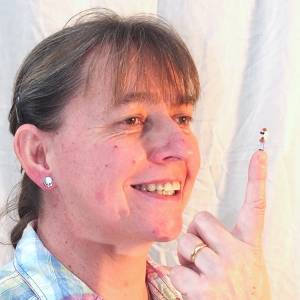Cornflower with visitors
I really love the blue of the cornflowers. Obviously I'm not the only one :-)
I couldn't find the reason, why there are always many ants on them, but I found some other interesting facts in wikipedia:
Their blue color receives the flower crowns of anthocyanidin and the very sensitive cyanidin. The latter dye is actually red, but here appears blue due to an iron-magnesium-calcium complex.
The petals fluoresce under ultraviolet radiation and therefore stand out from afar.
The stamens are easily irritated: In one touch, they are relaxed by sudden cell negative pressure (loss of turgor), bend this knee-shaped outward and pull the dust bag ring down. The fixed stylus then pushes the pollen emptied inwards out of the dust bag tube according to the "lamp cleaner principle". After only one minute, the stamens are irritable again.
It is a bio-indicator that shows how heavily the fields have been fertilized in previous years. For a long time she had become rare due to over-fertilization of the fields.
In the Middle Ages, the cornflower was important as a flower of Mary, so it is found on Gothic wing-age pictures and other illustrations.
The blue cornflower was one of the national symbols of Germany.
The flower was identified with Prussia, not least because it had the same color as the Prussian military uniform. After the unification of Germany in 1871, it became the symbol of the entire country. For this reason, the blue cornflower in Austria is a political symbol for all-German and right-wing ideas. It was worn in the 1930s as a secret symbol for members of the then illegal NSDAP in Austria. Members of the Freedom Party wore it at the openings of the Austrian parliament since 2006.
In France the bleuet de France is the symbol of the 11 November 1918 armistice and, as such, a common symbol for veterans (especially the now defunct poilus of World War I), similar to the Remembrance poppies worn in the United Kingdom and in Canada.

Comments
Sign in or get an account to comment.


